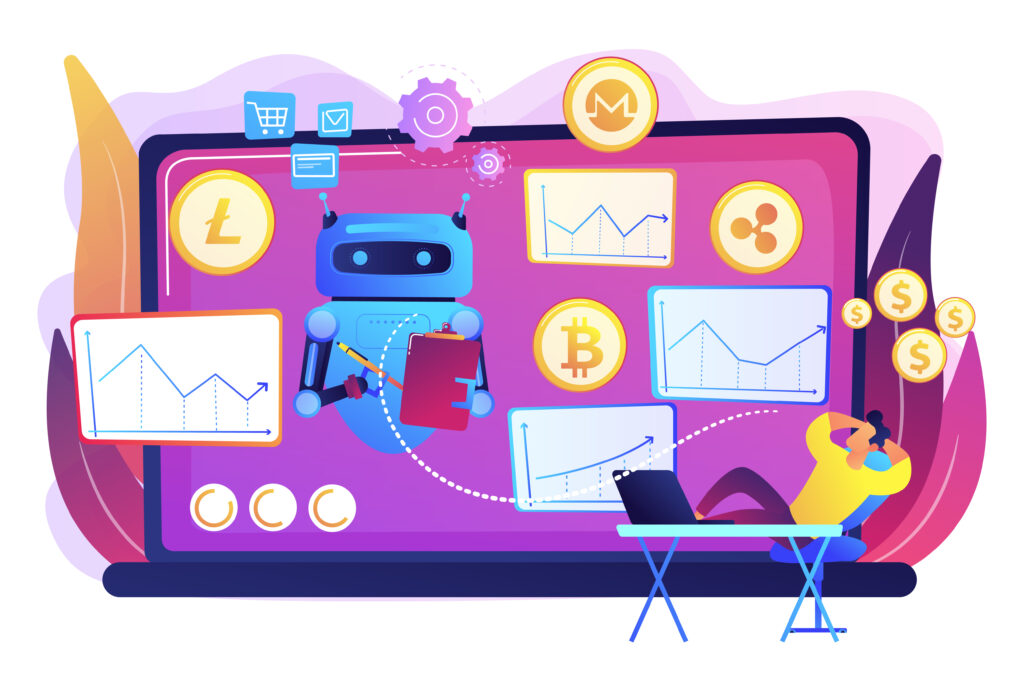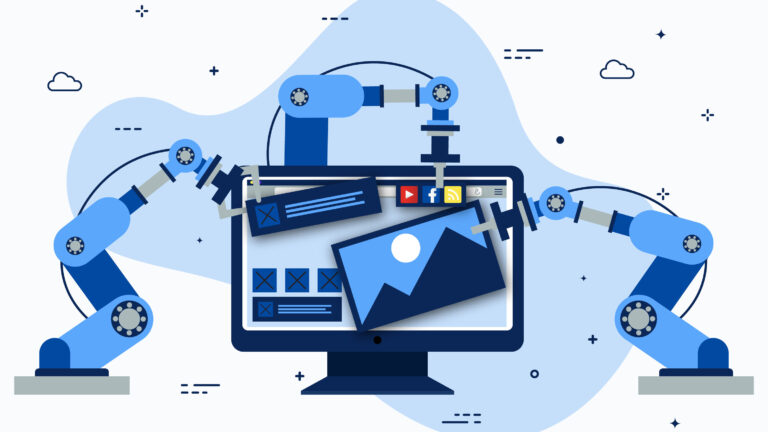Artificial Intelligence (AI) has moved from sci-fi movies into our daily lives. From helping you write an email to creating stunning images from a simple text prompt, AI is changing how we work, create, and solve problems. You might be wondering how to find the best AI tools for marketing or if these tools are too complex. The good news is, they are more accessible than ever.
This guide will show you how to use AI tools for marketing to boost your productivity and creativity. We’ll break down the different types of tools, offer practical steps for using them, and share expert tips to help you achieve the best results. By the end, you’ll have the confidence to make AI a powerful part of your professional life in 2025.

Understanding the Landscape of AI Tools for Marketing
Before you can master AI, you need to know what you’re working with. AI tools for digital marketing aren’t a single, one-size-fits-all solution. They are a diverse set of applications designed for specific tasks. Think of them as a digital toolkit, with each tool serving a unique purpose.
Some tools are designed to generate text, others create images, and many help you analyze data or automate repetitive tasks. Understanding these categories is the first step for AI tools for marketers to choose the right solution. This knowledge will help you move from being a casual user to someone who strategically leverages AI.
Generative AI: Your Creative Partner
Generative AI is what most people think of when they hear “AI.” These are tools that create new content. This content can be text, images, music, or even code. They work by learning from massive amounts of data and then using that knowledge to produce something entirely new based on your instructions, called prompts.
Popular examples include ChatGPT for text generation and Midjourney for image creation. The key to success with generative AI is learning how to write effective prompts. A clear, detailed prompt will give you a much better result than a vague one. Knowing how to use these types of AI tools for marketing starts with mastering the art of the prompt.
Analytical AI: Uncovering Insights
Analytical AI tools are designed to sift through vast amounts of data to find patterns, trends, and insights that a human might miss. Businesses use these tools to understand customer behavior, forecast sales, and optimize their operations. Marketers can use them to track campaign performance and gain audience insights.
These tools are less about creation and more about interpretation. They take complex information and make it understandable. For example, a marketing team might use an AI tool to analyze social media comments to gauge public opinion about a new product.
Automation AI: Your Efficiency Booster
Automation AI tools focus on taking over repetitive, rule-based tasks. Think about the chatbots that answer customer questions on websites or the software that automatically sorts your emails into different folders. These tools are designed to free up your time so you can focus on more important, creative work.
The goal of automation AI is efficiency. By handling the mundane tasks that fill up our days, these tools allow us to be more productive. Integrating them into your workflow can save you hours each week. Learning how to use AI tools for digital marketing automation is a direct path to working smarter, not harder.

A Practical Guide on How to Use AI Tools
Now that you understand the different types of AI tools for marketers, let’s get into the practical side of things. Using these tools effectively is a skill, but it’s one that anyone can learn. This section provides a step-by-step approach to get you started.
Follow these guidelines to ensure you’re getting the most out of your chosen AI applications. From defining your goal to refining your output, each step is crucial for achieving maximum impact.
Step 1: Define Your Goal
Before you even open an AI tool, ask yourself: what do I want to accomplish? A clear objective is the foundation of a successful interaction with AI. Without a goal, you might end up with interesting but ultimately useless results.
Are you trying to:
- Brainstorm blog post ideas for your content strategy?
- Create unique images for a social media campaign?
- Summarize a long competitor analysis report?
- Write subject lines for an email marketing sequence?
Your goal will determine which tool you use and how you interact with it. A well-defined objective acts as your north star, guiding your efforts and helping you measure success.
Step 2: Choose the Right Tool for the Job
Once you have a goal, you need to select the appropriate tool. You wouldn’t use a hammer to saw a piece of wood, and the same logic applies to finding the best AI tools for marketing. Using a text generator to create a complex data visualization, for instance, won’t work.
- For writing: Consider tools like ChatGPT, Jasper, or Copy.ai.
- For images: Explore Midjourney, DALL-E 3, or Stable Diffusion.
- For data analysis: Look into tools like Tableau or Polymer.
- For automation: Zapier or IFTTT can connect different apps and automate workflows.
Take some time to research the options. Many tools, including some free AI tools for marketing, offer trials, allowing you to experiment before committing. This is a key part of learning how to use AI tools for marketing, finding the ones that fit your workflow.
Step 3: Master the Art of the Prompt
Your input, or prompt, is the single most important factor in determining the quality of the AI’s output. A prompt is more than just a question; it’s a set of detailed instructions. A great prompt is specific, provides context, and defines the desired format.
For example, instead of asking, “Write about social media,” a better prompt would be:
“Write a 500-word blog post introduction about the benefits of using Instagram Reels for brand awareness. Use an upbeat and engaging tone. Include a short, successful example. The target audience is small business owners.”
This detailed prompt gives the AI clear direction, leading to a much more relevant and high-quality response. Practice and experimentation are key to becoming a prompt engineering expert.
Step 4: Review and Refine the Output
AI is a powerful assistant, but it’s not perfect. It’s essential to treat the AI-generated content as a first draft, not a final product. Always review the output for accuracy, tone, and overall quality. The AI might misunderstand your prompt or include information that is incorrect or outdated.
Don’t be afraid to iterate. Take the AI’s output, make your own edits, and if necessary, go back to the tool with a refined prompt. You might ask it to “make the tone more professional” or “expand on the second point.” This collaborative process of refining and editing is where you truly unlock the tool’s potential.
Manual Editing vs. Full AI Automation: A Comparison
A common question is whether to rely fully on AI or to maintain a human touch. While full automation can be tempting for its speed, a hybrid approach that combines AI’s power with human oversight often yields the best results. Here’s a comparison to help you decide which approach is right for you.
| Feature | Manual Editing (Human-in-the-Loop) | Full AI Automation |
| Speed | Slower, requires human review and input. | Extremely fast, generates content in seconds. |
| Accuracy | Higher, as a human can fact-check and correct errors. | Can be prone to inaccuracies or “hallucinations.” |
| Creativity | Blends AI’s suggestions with human intuition and experience. | Can sometimes produce generic or repetitive content. |
| Tone & Nuance | Can be precisely tailored to match brand voice and audience. | May struggle with subtle emotional and cultural nuances. |
| Cost | Higher in terms of time invested. | Lower in terms of time, but may have subscription costs. |
| Best For | High-stakes content like marketing copy, reports, and articles. | Brainstorming, creating first drafts, and automating simple tasks. |
For most professional applications, a human-in-the-loop approach is superior. It allows you to harness AI’s speed while ensuring the final product is accurate, original, and perfectly aligned with your brand.
Advanced Tips for Maximum Impact in 2025
Once you’ve mastered the basics, you can move on to more advanced techniques. These tips will help you push the boundaries of what’s possible with the best AI tools for marketing and integrate them more deeply into your workflows.
Create Custom Instructions and Personas
Many AI tools, like ChatGPT, allow you to set up custom instructions or “personas.” This means you can tell the AI to always adopt a certain tone, writing style, or perspective. For example, you could instruct it to always respond as a witty marketing expert for a specific brand. This saves you from having to specify the tone and style in every single prompt, creating a more consistent output.
Chain Together Multiple AI Tools
No single AI tool can do everything. The real power comes from combining the strengths of different tools. For example, you could:
- Use ChatGPT to brainstorm a list of blog post ideas.
- Use an AI image generator like Midjourney to create a featured image.
- Use a tool like Grammarly to proofread and edit the final article.
By creating a workflow that chains multiple AI tools for digital marketing together, you can produce higher-quality results more efficiently.
Stay Updated on New Features and Tools
The world of AI is evolving at an incredible pace. To stay ahead, dedicate time each week to learning about the latest developments. Follow AI news websites, subscribe to newsletters from experts, and join online communities where users share tips. Being an early adopter of new capabilities can give you a significant edge.
Conclusion: Embracing Your New AI-Powered Future
Learning how to use AI tools for marketing is no longer an optional skill; it’s becoming a fundamental part of modern work. By understanding the different types of tools, following a structured process, and continuously refining your approach, you can unlock incredible potential.
Remember that AI is a partner, not a replacement for human ingenuity. Use it to handle heavy lifting, automate repetitive tasks, and spark new ideas. Then, apply your unique expertise to shape the final output. The ultimate impact comes from this powerful collaboration between human and machine. Start experimenting today, and get ready to achieve more than you ever thought possible in 2025.
Frequently Asked Questions (FAQ)
Here are answers to some common questions about using AI tools.
Q1: Are AI tools difficult to learn?
Not at all! Most modern AI tools for marketers are designed with user-friendly interfaces. While advanced features may require some learning, the basics are typically very intuitive.
Q2: Is content created by AI considered plagiarism?
Generally, no. Generative AI tools create new content based on patterns learned from vast datasets. However, it’s always good practice to review and personalize the content. Running a plagiarism check on important documents is a wise precaution.
Q3: How much do AI tools cost?
Prices vary widely. Many tools offer a free tier, so you can find several free AI tools for marketing to get started. Paid plans can range from $10-$20 per month for individual use to hundreds or thousands for enterprise solutions.
Q4: Can AI tools be wrong?
Yes, absolutely. AI models can “hallucinate,” meaning they generate incorrect or fabricated information. It is crucial to fact-check any information, especially statistics or factual claims, that you get from an AI tool.
Q5: How can I ensure my brand’s voice is consistent when using AI?
The best way is to use a human-in-the-loop approach. Use the AI to generate a first draft, then have a human editor refine it. Using custom instructions, as mentioned earlier, can also help maintain consistency.



